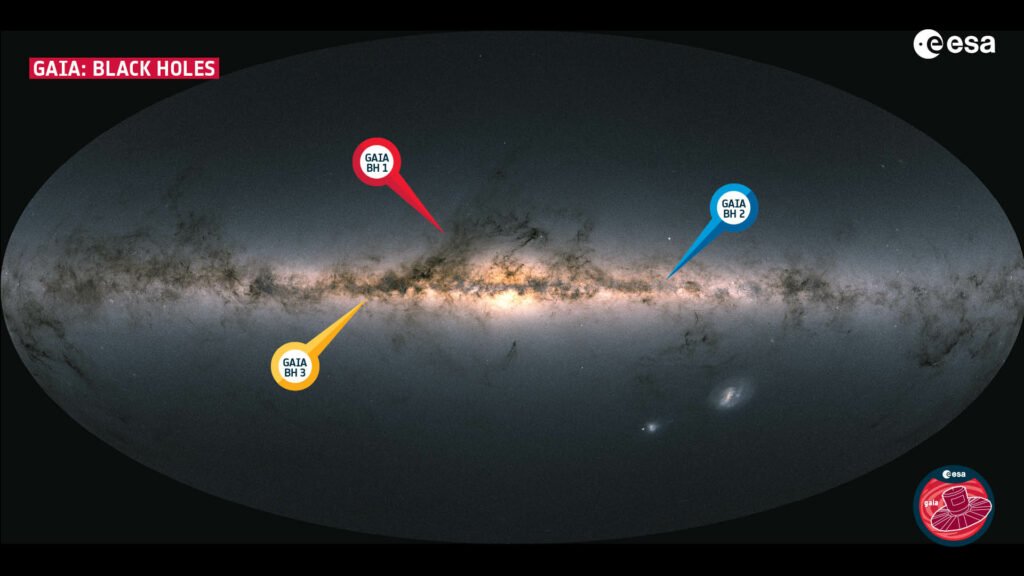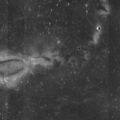Scientists from the European Space Agency’s Gaia mission have identified a dormant black hole with a mass of 33 solar masses, making it the most massive black hole of stellar origin discovered within our galaxy to date. The discovery, derived from the preliminary data of Gaia’s fourth data release, sheds new light on the formation and distribution of black holes in the cosmos.
The black hole, named Gaia BH3, is part of a binary system located approximately 590 parsecs from Earth. The discovery is significant not only because of the black hole’s mass but also because it challenges existing models of stellar evolution and black hole formation.
“No one was expecting to find a high-mass black hole lurking nearby, undetected so far,” stated Gaia collaboration member Pasquale Panuzzo in a statement. “This is the kind of discovery you make once in your research life.”
Black holes, regions in space where the gravitational pull is so strong that not even light can escape, are typically detected by the high-energy radiation emitted when they interact with other stars or gas clouds. However, Gaia BH3 does not interact significantly with its companion star, making it a “dormant” black hole, detectable only through the gravitational influence it exerts on its companion.
The Gaia satellite, operated by the European Space Agency (ESA), is designed to map the positions of billions of stars with unprecedented precision. The detection of Gaia BH3 was made possible by analyzing the tiny wobbles in the star’s motion, caused by the unseen black hole’s gravitational pull.
The mass of Gaia BH3 is extraordinary because it exceeds the typical mass of stellar black holes in our galaxy, which are usually no more than 15 solar masses. At 33 solar masses, this beast poses a challenge to current theories of stellar evolution, which struggle to explain how a black hole of this mass would form from a single star.
According to a recent study detailing the discovery, the black hole’s formation is likely linked to its metal-poor environment. Metals (in astronomy, any element heavier than helium) contribute to stellar winds, which can blow off significant portions of a star’s mass as it evolves. In metal-poor stars, weaker stellar winds would allow more of the star’s original mass to collapse into a black hole when it dies.
“What strikes me is that the chemical composition of the companion is similar to what we find in old metal-poor stars in the galaxy,” says Elisabetta Caffau, a member of the Gaia collaboration, in a statement. “There is no evidence that this star was contaminated by the material flung out by the supernova explosion of the massive star that became BH3.”
This discovery also has implications for the study of gravitational waves, ripples in spacetime caused by some of the most violent and energetic processes in the Universe. Most of the black holes detected by gravitational wave signals so far have masses similar to or larger than that of Gaia BH3, suggesting that such massive black holes may be more common than previously thought.
The Gaia BH3 system offers a unique laboratory for testing theories of stellar evolution and black hole formation. Its relatively close proximity to Earth and the detailed data collected by Gaia provide an unprecedented opportunity for follow-up observations.


The team plans to use other telescopes to study the system in different wavelengths, which could provide more clues about the properties of both the black hole and its companion star.
Moreover, this discovery underscores the importance of missions like Gaia, which provide the high-precision data necessary to uncover the hidden components of our galaxy.
“It’s impressive to see the transformational impact Gaia is having on astronomy and astrophysics,” explained Prof. Carole Mundell, ESA Director of Science. “Its discoveries are reaching far beyond the original purpose of the mission, which is to create an extraordinarily precise multi-dimensional map of more than a billion stars throughout our Milky Way.”
MJ Banias covers security and technology with The Debrief. You can email him at mj@thedebrief.org or follow him on Twitter @mjbanias.

